One of my favorite garden stories to share when I talk to groups or teach garden design is a re-telling of John Little’s story of his own garden. When you write a garden design book with over a thousand images and featuring (among many other things) – 23 very special gardens – you have to talk to lots of people. My conversation with John is one that sticks with me, even 10 years later. John’s recycled habitat garden at Hilldrop in Essex, England is the first place I ever saw a challenge to conventional garden design thinking come to life. It is a place that is not only beautiful for humans but an exciting experimental place. It is the basis for John’s work using recycled materials in garden design, and creating grass roof structures, and habitat gardens for invertebrates and other wildlife.
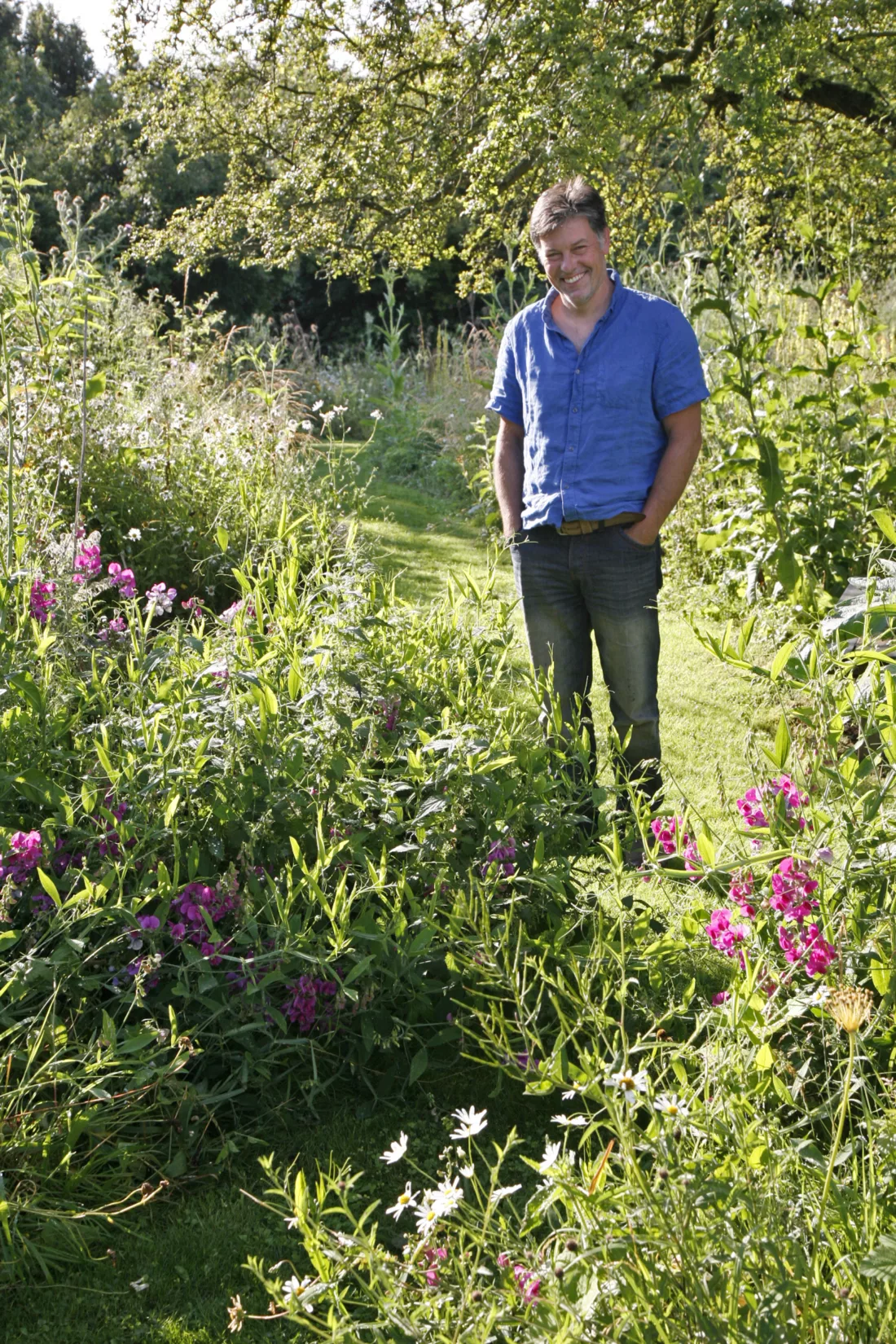
John’s own garden is a beautiful reflection of his interests in building more sustainable gardens, his studies in wildlife and landscape maintenance, his creativity, and also his life with family and friends over the years.
I recently came across an interview with John on the Root’s and All podcast and was again drawn to his wisdom. These are my favorite takeaway’s from John Little’s thinking on Garden Design:
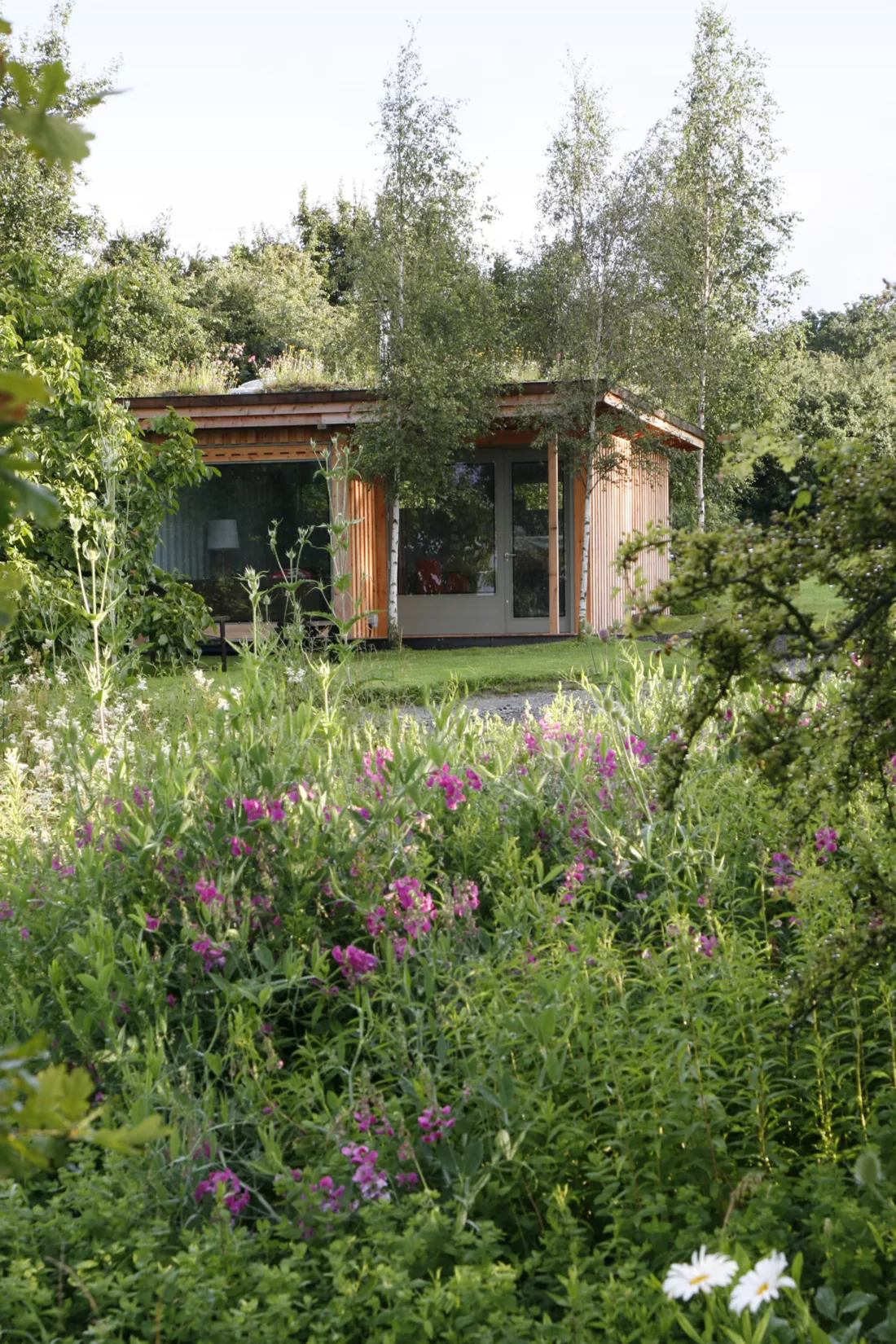
THE MOST IMPORTANT ELEMENT OF SUCCESS IN MEADOW MAKING…
…is soil, but it’s not what you might think.
The best meadows are filled with wildflowers. But like all gardens, a meadow needs management, else it will, in just a season or two, become scrubby. Following that, it will likely begin to revert to woodlands (in many places).
Wildflowers – particularly those native to where you are – are the best meadow plants for a new meadow. Not only will they support all the native invertebrates (bugs) but they will be the only thing that thrives on infertile soil.
All good gardening advice tells you to pay attention to your soil. In the case of the meadow garden, it’s the same. It is just that you need to make sure it is “bad” soil.
“Good” (fertile) soil is what we want when we’re trying to grow more needy plants. Most plants will likely do well to have been placed in substrates that are improved with compost and other amendments. These upgrades will help everything grow – including the unwanted plants.
In a meadow – often prized for its simplicity and wildness, fertility will encourage weeds to quickly take over. The needless excess nutrients will lead to a need for hand weeding and higher maintenance. (which is not what anyone wants to do in any garden – but in a meadow it is particularly antithetical to the low maintenance appeal of the style).
Left alone, the meadow will collapse. Less fertile soils will prevent many aggressive plants from taking over while also providing for plants adapted to the conditions.
Have you ever noticed how some plants can grow too fast, or weakly when over fed? That is what happens to many wildflowers – the nutrients are too much!
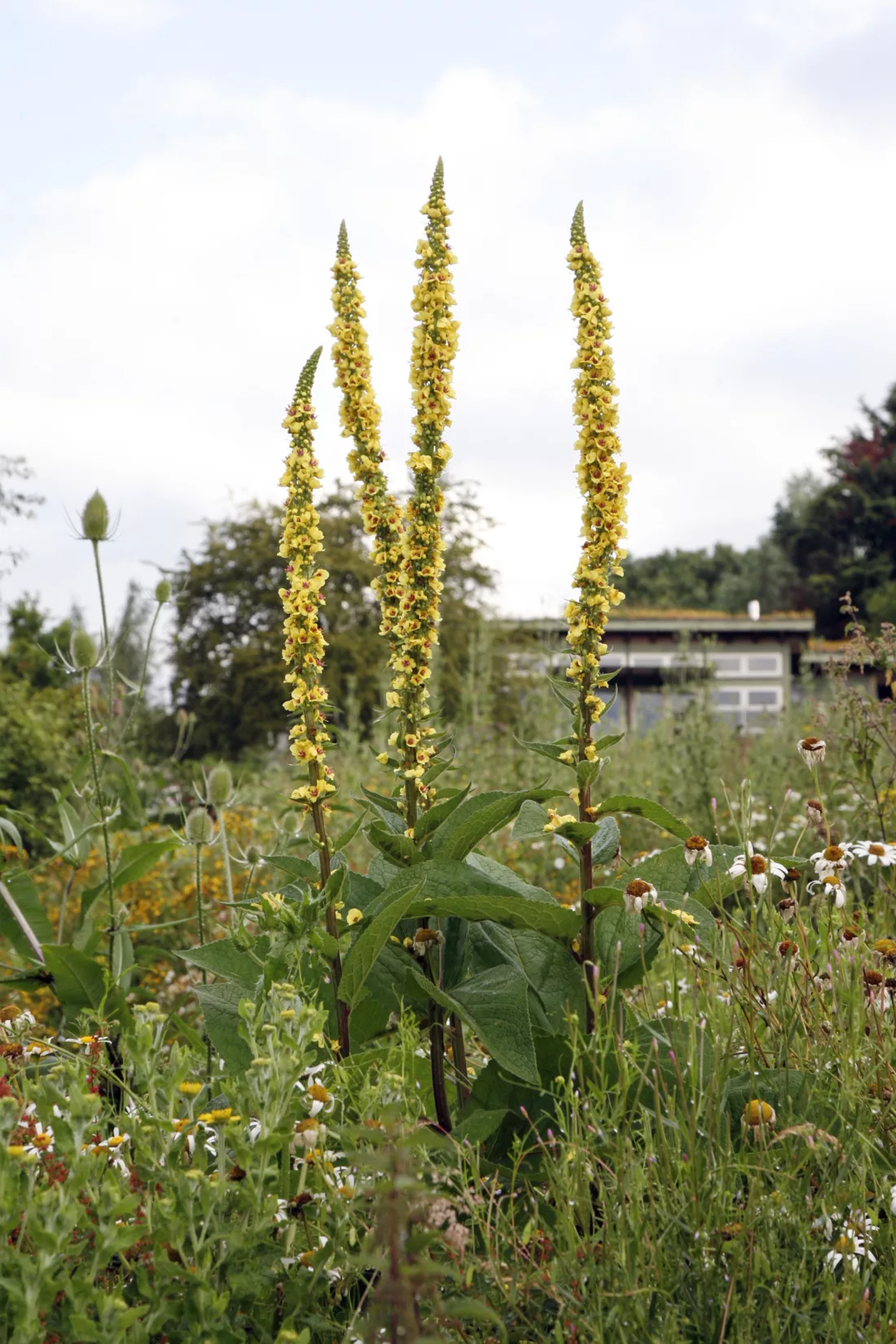
But with Infertile Soil…
But with infertile soil – the weeds and scrubby plants that tend to invade and make a meadow less meadowy will not be able to take hold, making the meadow more manageable and beautiful.
John advises that if you are trying to make a meadow and you have even mediocre soil, you would be well served to scrape off the good stuff to use elsewhere. (like in a vegetable patch).
Removing a top layer of fertile soil will also help reduce the existing seed load to compete with your desired wildflowers.
You can further reduce the fertility of the soil by adding in other substrates. Gravels, recycled garden construction materials, and bricklayers or masonry sand are all good options for improving conditions for a wildflower meadow. Give yourself and your meadow plants the luxury of soil that is not too rich.
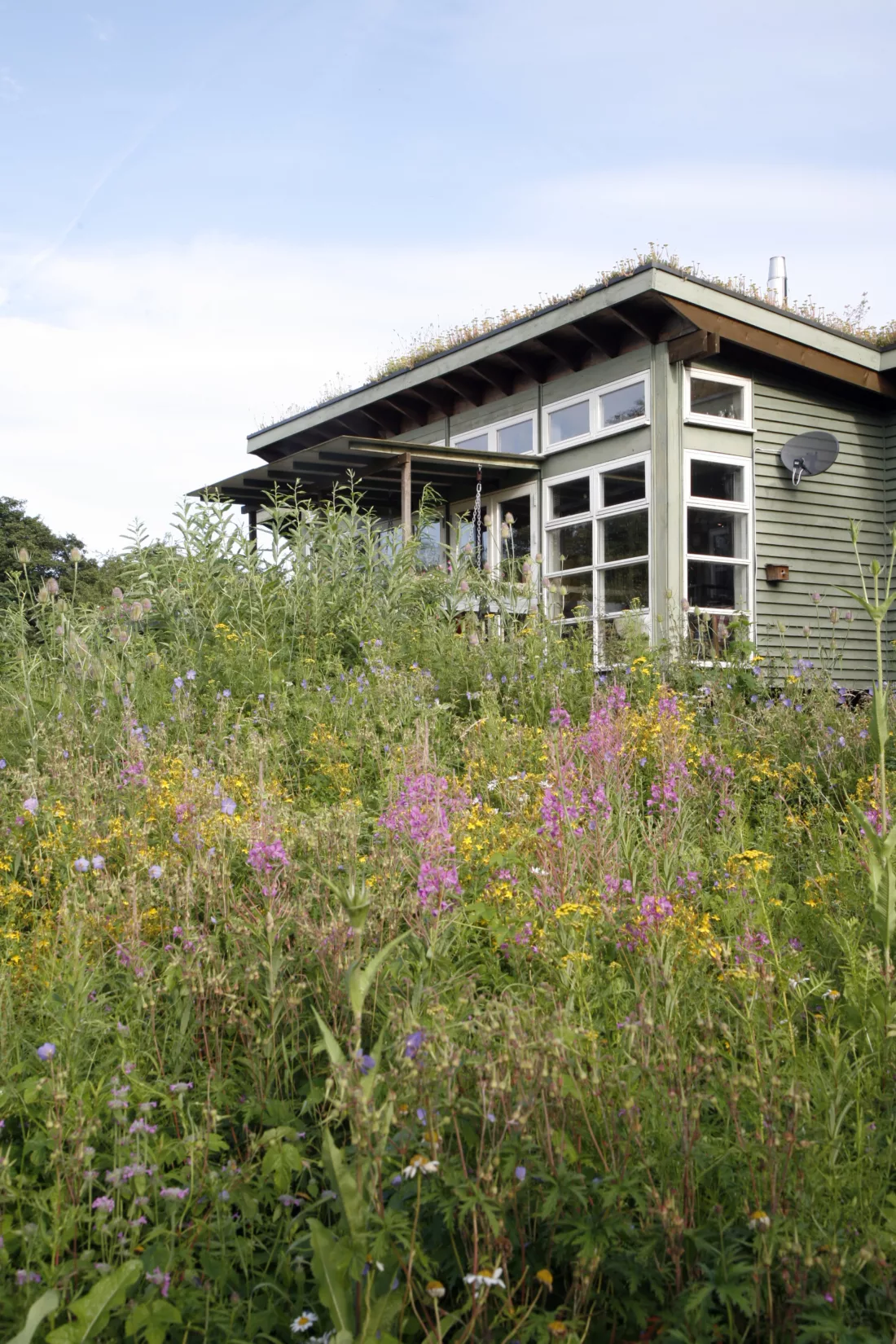
USE RECYCLED GARDEN MATERIALS FOR POLLINATORS
Speaking of simple solutions – John’s been experimenting with creating habitats for solitary bees. He has found that adding piles of sand to a garden will provide bee nesting areas.
In his trials, un-vegetated piles of sand in sunny spots consistently drew solitary bees to sites that previously had none.
What is so great about solitary bees? Native solitary bees are tougher that honey bees and they remain active under worse weather conditions. Having them around to help with pollination will lead to higher levels of seed set and higher fruit and vegetable yields .
It’s not just that native solitary bees are better pollinators (scientists estimate they are 300x more effective than their honey making friends) – but they are also safer. Since they don’t have hives to protect, they are much less likely to sting. Even if you do happen to get caught up with one, they also have a different venom. Their sting is unlikely to cause as much pain and does not contain the same allergens that can lead to anaphylaxis in reactive people.
Unsurprisingly, in the quest for more sustainable diversity in his landscapes, John has found that diversity of wildlife is a direct result of a diversity of soil substrates.
If you’re creating a garden to support more insects, diversity and wildflowers, sand and infertile planting substrates are your friends.
I hope you’ll be relived to hear you don’t need to “improve” everything.
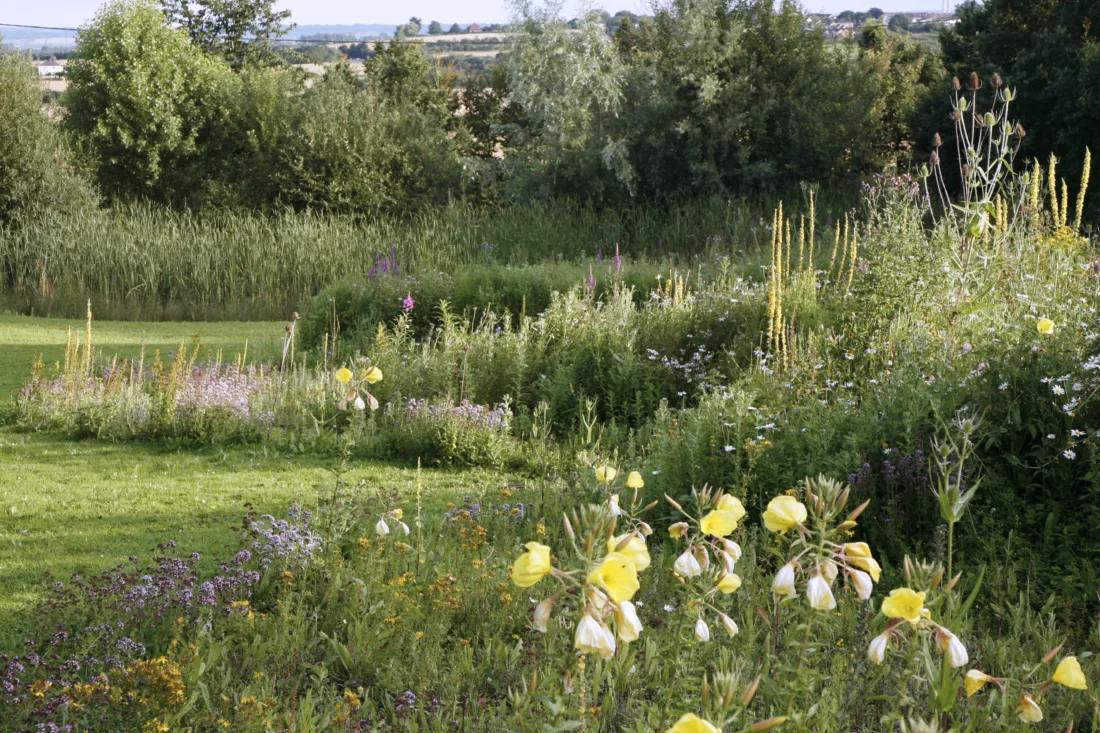
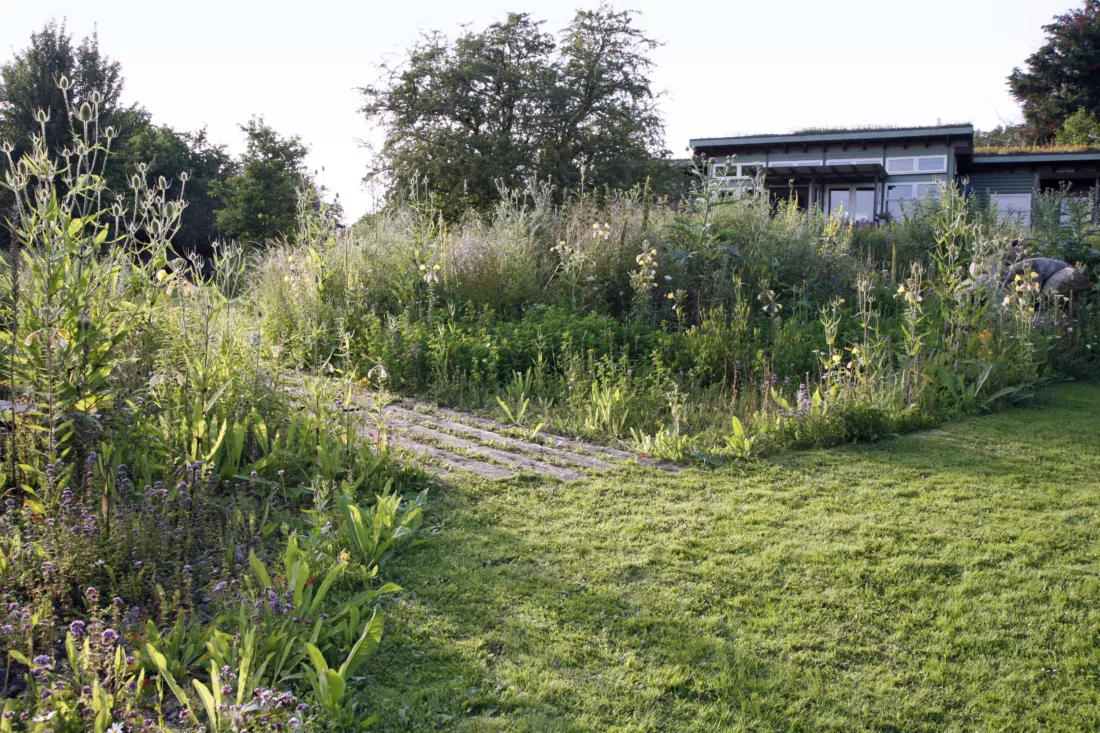
“If you get habitat right for bugs then pretty much everything follows… Landscapes should be dictated much more by entomologists than fashionable landscape architects.”
JOHN LITTLE OF THE GRASS ROOF COMPANY
Unexpected Recycled Garden Elements
Whenever I show this picture (below) in one of my talks, it always gets at least one gasp from the crowd.
John likes to take a good natured poke at those of us who try to make sure our gardens are stylish. But is there anything more casually chic car than a vintage Citroen? My old white Prius would not hit the same style notes. Hilldrop features two of these recycled and embedded French classics – buried, to provide habitats and homes to foxy foxes and winsome woodchucks.
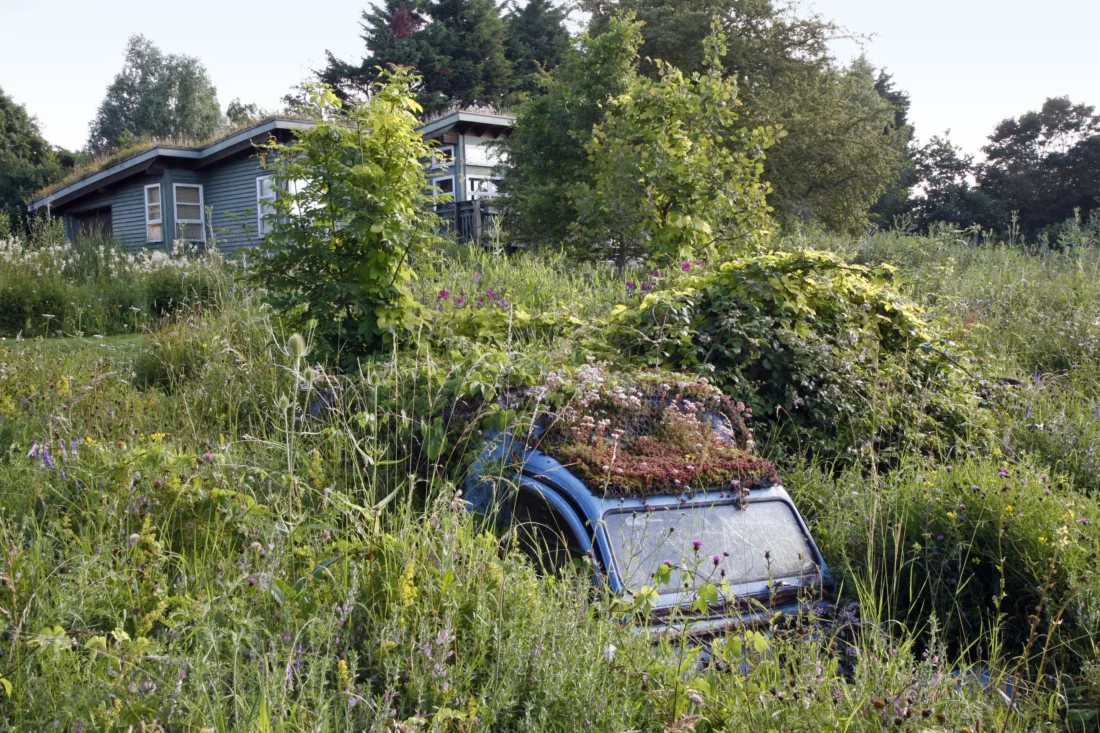
Totally Pointless Landscape Spaces
Think about where you live – are there totally pointless areas in your garden or in your neighborhood? Those landscaped areas that are useless due largely to their size or shape? They’re often small and awkward. They often measure less than 10′ in any direction. But to keep them “tidy” and “easy”, we tend to fill them with turf.
John’s company maintains many public and private landscapes. He points out that these totally useless places – once planted with grass – become an everlasting burden. It is short term thinking. The grass requires time, expense and fuels to keep them constantly mowed and managed. It is a huge cost for areas are not useful for recreation, play or even aesthetics.
In England, where he lives, he has taken to replacing these patches with stands of currants. The native currants do not require the maintenance and provide edible berries for anyone who wants to pick them. He has been a challenge to convince neighbors to take advantage of the public food plants, but even if the berries go to the birds, it is a more sustainable option.
Here in New England, it is not advisable to plant currants but it would make sense to similarly replace these areas with stands of our native blueberries.
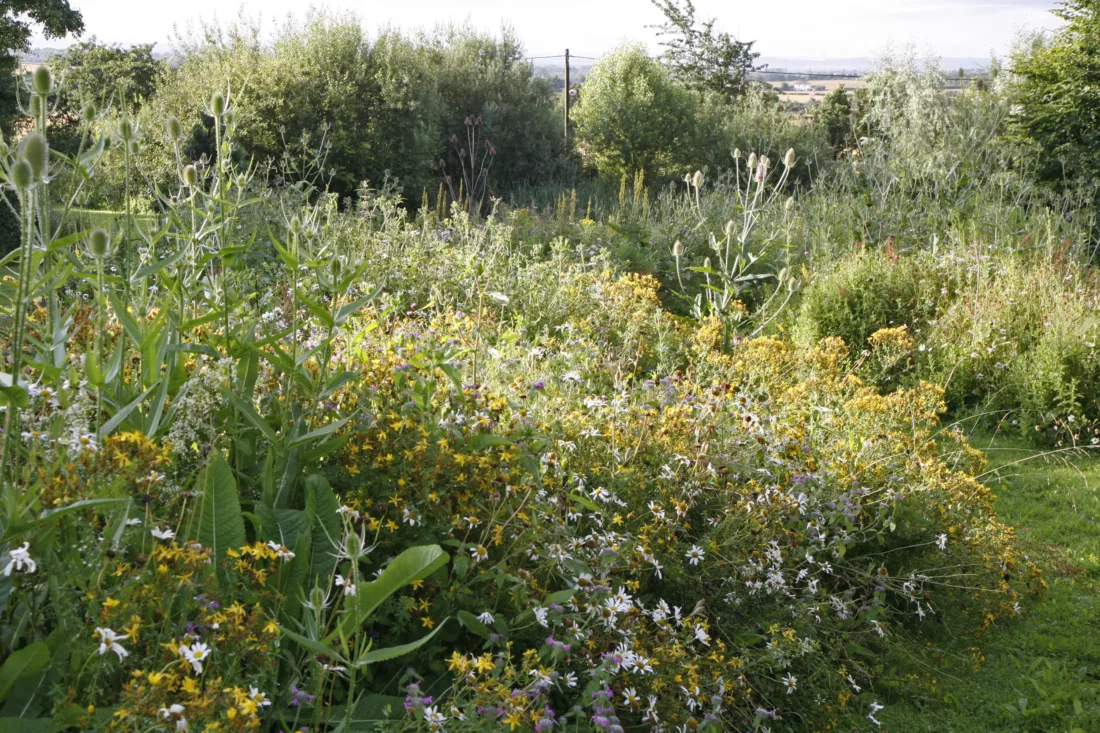
The Gift of Trees
When John and his wife Fiona purchased this land, there were no permanent structures, and they were travelers. Instead of a traditional housewarming party, they invited their friends to come and camp and celebrate their new adventure. The friends brought gifts of birch tree saplings.
Planted in a grove, now these trees are a beautiful place for a hammock. John and Fiona can lie back, relax, and enjoy a leafy sky view and the memories and friends that helped create it.
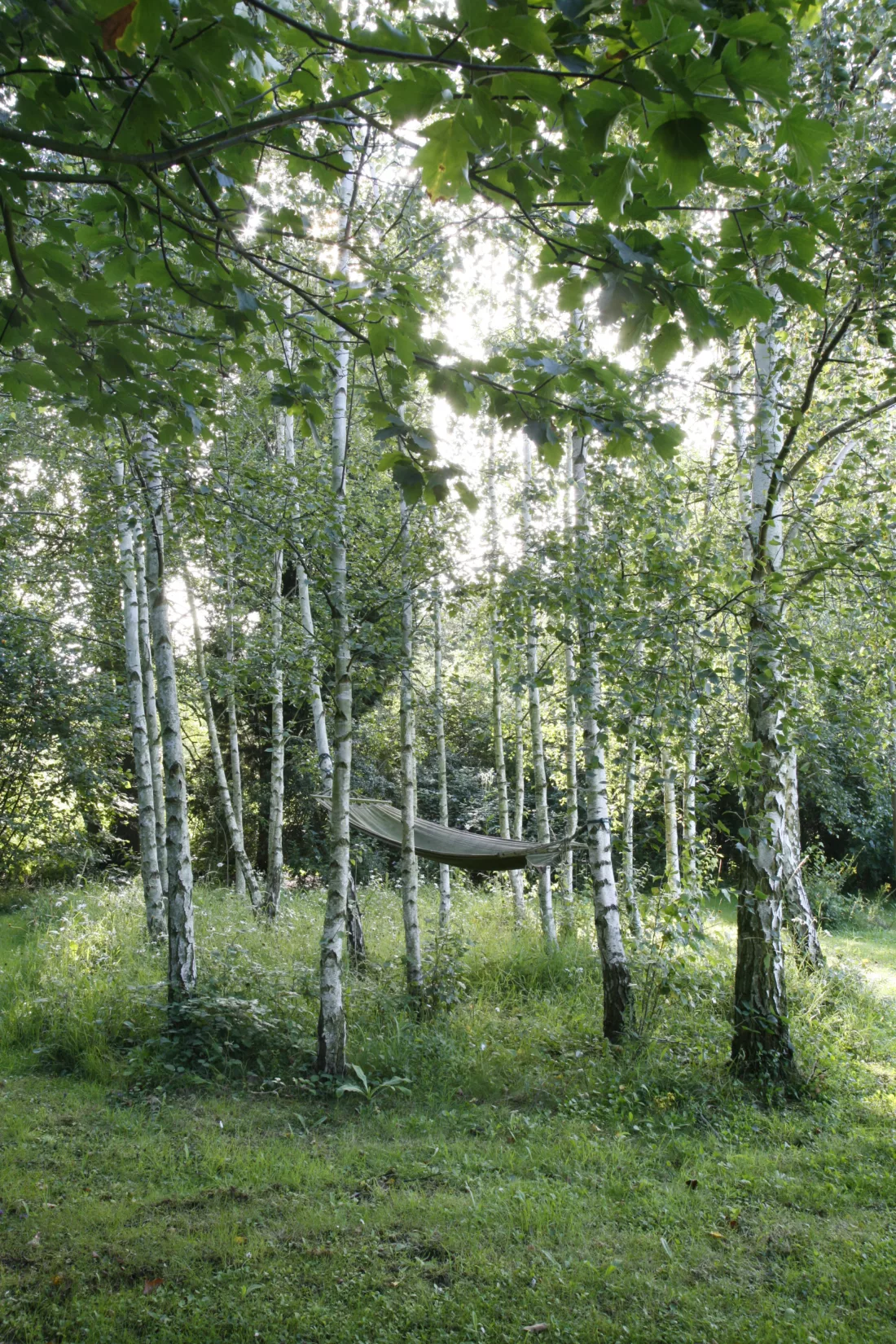
More about John Little:
John’s companies specialize in green roofs, school gardens, creating urban habitats, and building with sustainable materials. When you are in this sort of work having your own private place to experiment with your techniques is essential. The goal of the garden was twofold. Create as many different habitat niches as possible and create a space for parties and friends to camp and stay. Inspiration came from recycling centers and finding unusable waste, and through this garden project, he has discovered that some of his favorite features (the crushed concrete stream that runs from the house to the pond) and the best wildlife habitats come from the creative reuse of unlikely resources. You might also want to check out this map of Hilldrop – it is full of garden ideas for sustainable gardens.
images from a selection provided for Cultivating Garden Style.
+comments+